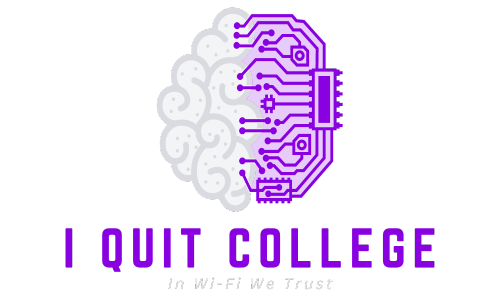In today’s competitive business landscape, staying ahead requires more than just keeping up with the latest trends. It demands innovative product development tactics that push the boundaries of traditional approaches, setting your brand apart and capturing the attention of your target market.
From pioneering product innovation strategies to implementing effective development processes, businesses need to embrace cutting-edge innovation techniques and advanced product design methods. By adopting creative development approaches and forward-thinking innovation processes, you can revolutionize your product development strategies and create game-changing products that leave a lasting impact.
Key Takeaways:
- Implement innovative product development tactics to differentiate your brand and capture the market’s attention.
- Utilize product innovation strategies and effective development processes to stay ahead of the competition.
- Embrace cutting-edge innovation techniques and advanced product design methods to revolutionize your products.
- Adopt creative development approaches and forward-thinking innovation processes to create game-changing products.
- Continually iterate and improve your products to ensure long-term success and customer satisfaction.
Understanding the Importance of Product Development Strategies
Product development strategies play a critical role in the success of businesses. These strategies are essential for ensuring the development of competitive products that align with the company’s goals. By implementing effective product development strategies, businesses can achieve sustainable growth and profitability in the long run.
One key aspect of product development strategies is conducting thorough market research. This involves analyzing the market to identify opportunities and understand customer needs and preferences. By gathering valuable insights through market research, businesses can develop products that meet the demands of their target audience, gaining a competitive advantage.
Another vital element of product development strategies is resource allocation. Optimizing resource allocation ensures that businesses allocate their time, effort, and capital effectively to support product development activities. By allocating resources strategically, businesses can streamline the development process and maximize productivity, ultimately leading to the creation of high-quality products.
Adapting to market changes is also crucial for successful product development strategies. Markets are dynamic and constantly evolving, and businesses must remain agile and responsive to stay ahead. By monitoring market trends and embracing changes, businesses can develop products that meet the ever-changing needs of customers and remain competitive.
Customer satisfaction is a primary goal of product development strategies. By focusing on customer needs, preferences, and feedback, businesses can develop products that generate high levels of satisfaction. Satisfied customers not only contribute to repeat sales and positive word-of-mouth, but they also act as brand advocates, driving new customer acquisition and sustainable growth.
Furthermore, product development strategies aim to achieve sustainable growth and profitability. By consistently delivering innovative and competitive products, businesses can capture a larger market share and increase revenue. Sustainable growth and profitability provide businesses with the resources to invest in further research and development, expanding their product portfolio and maintaining their market position.
In summary, product development strategies are crucial for businesses to develop competitive products, adapt to market changes, and achieve sustainable growth and profitability. By conducting market research, optimizing resource allocation, embracing change, and prioritizing customer satisfaction, businesses can create exceptional products that meet the evolving demands of customers and drive their success in the market.
Exploring Different Types of Product Development Strategies
When it comes to product development, businesses have a range of strategies to choose from based on their goals and target markets. Each strategy offers unique benefits and opportunities for success. Let’s delve into some of the most effective product development strategies:
1. Market Leader Strategy
The market leader strategy aims to establish a dominant position by offering superior products or services. Businesses employing this strategy focus on continuous innovation, quality improvement, and maintaining a competitive edge. Companies like Apple, with its groundbreaking iPhone, exemplify this strategy.
2. Market Challenger Strategy
A market challenger strategy involves surpassing existing market leaders through aggressive tactics, such as competitive pricing, enhanced features, or targeted marketing campaigns. For instance, Samsung challenged Apple’s dominance in the smartphone industry by launching the Galaxy series.
3. Niche Player Strategy
Niche players concentrate on serving a specific segment of the market exceptionally well. By targeting a niche market with unique needs, businesses can differentiate themselves from larger competitors. Patagonia, a leading outdoor apparel brand, focuses on environmentally-conscious consumers while providing high-quality and sustainable products.
4. Early Adopter Strategy
Early adopters are trendsetters who are willing to try new products and technologies before they gain widespread popularity. By targeting this group, businesses can build momentum and generate word-of-mouth buzz. Tesla successfully implemented this strategy by appealing to early adopters eager to embrace electric vehicles.
5. Late Adopter Strategy
On the other end of the spectrum, late adopters prefer to adopt products once they have been widely accepted. Businesses targeting this group must focus on building trust and emphasizing established benefits. Microsoft often employs this strategy with its software products, attracting late adopters who prefer stable and proven technology.
6. New Product Development
New product development involves creating innovative products that cater to emerging market needs, trends, or technologies. This strategy requires extensive research and development capabilities to identify opportunities and generate groundbreaking ideas. Companies like Amazon continuously introduce new products, such as the Kindle e-reader, to meet evolving customer demands.
7. Product Improvement
Product improvement focuses on enhancing existing products by incorporating customer feedback, adding new features, or upgrading quality. This strategy allows businesses to retain market share, increase customer satisfaction, and stay ahead of competitors. Apple’s regular iPhone updates and software enhancements are examples of this strategy in action.
8. Product Line Extension
Product line extension involves expanding an existing product line by introducing variations or complementary products. This strategy leverages the brand’s existing recognition and customer loyalty. Coca-Cola, for instance, has successfully extended its product line by introducing new flavors and limited-edition variations.
9. Product Diversification
Product diversification entails entering new markets or industries with unrelated products to spread risk and capture new revenue streams. This strategy requires careful market analysis and investment in research and development. The Virgin Group, led by Sir Richard Branson, exemplifies this strategy with its vast range of businesses, spanning from airlines to music labels.
10. Product Repositioning
Product repositioning involves changing a product’s positioning in the market to target a different customer segment or meet evolving consumer needs. This strategy may involve adjusting marketing messages, modifying features, or redesigning packaging. McDonald’s, for example, has successfully repositioned itself to cater to health-conscious consumers by offering healthier alternatives on its menu.
11. Technology-Driven Strategy
A technology-driven strategy focuses on leveraging advancements in technology to drive innovation and gain a competitive edge. This includes incorporating artificial intelligence, machine learning, or automation into products and services. Companies like Google, with its cutting-edge search algorithms, use this strategy to stay at the forefront of technological advancements.
12. Customer-Centric Strategy
A customer-centric strategy prioritizes understanding and meeting the unique needs and preferences of customers. This involves in-depth market research, personalized experiences, and tailoring products to customer feedback. Starbucks, renowned for its customer-centric approach, constantly refines its menu and store experiences based on customer insights.
13. Product-Led Growth Strategy
A product-led growth strategy focuses on building and refining a superior product to fuel organic user recommendations and drive growth. By prioritizing the value and usability of the product, businesses can generate strong word-of-mouth, customer loyalty, and sustainable growth. Asana, a project management software, follows this strategy by providing a user-friendly and feature-rich platform.
Whichever strategy a business chooses, it is essential to align it with overall business objectives, target customer preferences, and market dynamics. By carefully selecting and implementing the right product development strategy, businesses can elevate their product offerings and achieve long-term success.
The Stages of Product Development Strategies
Product development strategies involve several stages that must be followed to ensure a successful product launch. These stages include:
- Idea generation and screening: In this stage, product ideas are brainstormed and evaluated to determine their feasibility and market potential.
- Market research: Understanding customer needs and preferences is critical for developing a product that meets market demands. Market research provides valuable insights into target audiences and helps shape product features and positioning.
- Prototyping and testing: Creating prototypes allows for the refinement and validation of product concepts. Through testing, potential flaws can be identified and addressed, ensuring the development of a high-quality product.
- Production and launch: Once the prototype is finalized, the product moves into production and is prepared for its launch. This involves manufacturing, packaging, and logistics to ensure a smooth transition from development to the market.
- Product marketing: Effective product marketing is crucial for generating awareness and driving sales. Promotional activities, such as advertising, public relations, and online marketing, help create demand and attract customers.
- Product analytics: Tracking the product’s performance through analytics allows businesses to gain insights into consumer behavior, sales trends, and customer satisfaction. This data helps inform future product improvements and marketing strategies.
By following these stages, businesses can maximize the potential of their product development strategies, ensuring a successful and competitive product launch.
Conducting Thorough Market Research
Thorough market research plays a vital role in developing effective product strategies. By understanding the target market, conducting comprehensive market analysis, gathering customer feedback, and staying abreast of market trends, businesses can make informed decisions that lead to successful product development.
One of the first steps in market research is identifying the target market. This involves defining the specific group of consumers who are most likely to be interested in and benefit from the product. By understanding their demographics, preferences, and purchasing habits, businesses can tailor their products to meet their needs and gain a competitive advantage.
Market analysis is another crucial aspect of market research. It involves studying market dynamics, such as industry trends, competitors, and customer behavior. By analyzing market size, growth potential, and market share, businesses can gain valuable insights that inform their product development strategies.
Gathering customer feedback through focus groups and surveys is an essential part of market research. It allows businesses to gain firsthand insights into customer preferences, pain points, and expectations. This valuable feedback can be used to refine product features, enhance usability, and improve overall customer satisfaction.
Customer feedback is an invaluable resource that drives innovation and ensures that products are developed with the end-user in mind.
Staying updated on market trends is crucial for businesses to stay relevant and competitive. By monitoring emerging trends, technological advancements, and changes in consumer behavior, businesses can identify opportunities for product development and strategic positioning.
Gaining Market Share through Informed Decision-making
Thorough market research empowers businesses to make informed decisions that lead to gaining market share. By understanding the target market, analyzing market dynamics, leveraging customer feedback, and staying ahead of market trends, businesses can develop products that resonate with consumers and outperform competitors.
Market research provides businesses with valuable insights that enable them to identify unmet needs, discover untapped market segments, and develop innovative solutions that meet customer expectations. By aligning product development strategies with market insights, businesses can position their products effectively, differentiate themselves from the competition, and gain a larger market share.
Valuable Insights for Informed Decision-making
Market research offers valuable insights that inform decision-making throughout the product development process. It guides businesses in setting realistic goals, identifying market opportunities, defining product features, pricing strategies, and marketing tactics.
By utilizing market research data, businesses can make data-driven decisions that minimize risks and maximize the potential for success. It provides a foundation of knowledge that enables businesses to effectively allocate resources, forecast demand, and strategize for sustainable growth.
Customer-Centric Approach for Success
Market research reinforces the importance of adopting a customer-centric approach to product development. By understanding customer needs, preferences, and pain points, businesses can create products that deliver exceptional value and exceed customer expectations.
A customer-centric approach allows businesses to develop products that address specific customer needs, solve their problems, and enhance their lives. By prioritizing customer satisfaction and incorporating customer feedback into the product development process, businesses can build long-lasting customer relationships and foster brand loyalty.
Developing a Strong Value Proposition
A strong value proposition is crucial for standing out in the market and attracting customers. In order to differentiate themselves from competitors, businesses need to identify and highlight the unique features and benefits of their products.
Product differentiation plays a significant role in creating a compelling value proposition. By showcasing the distinct advantages their products offer, businesses can effectively address customer pain points and cater to specific needs and preferences.
One way to enhance product performance and boost customer interest is by leveraging AI technology. By incorporating artificial intelligence into their products, businesses can provide innovative solutions that are efficient, accurate, and personalized.
Addressing Customer Pain Points
“Our product is designed to alleviate the common pain points that customers encounter in their daily lives. Through in-depth research and analysis, we have identified the key challenges faced by our target audience and developed unique features that directly address these issues.” – John Smith, Product Manager
By understanding and empathizing with customer pain points, businesses can create a value proposition that resonates and establishes a strong connection with their target market.
Highlighting Unique Features
Highlighting the unique features of a product is essential for setting it apart from competitors. By clearly communicating the advantages and benefits that customers can expect, businesses can capture attention and generate interest.
“Our product stands out through its groundbreaking technology and innovative design. With features that are unparalleled in the market, we offer our customers an exceptional experience that cannot be found elsewhere.” – Jane Johnson, CEO
By effectively showcasing the unique features of their products, businesses can differentiate themselves and create a competitive edge in the market.
Developing a strong value proposition requires a deep understanding of customer pain points, leveraging AI technology, and highlighting unique features. By crafting a compelling value proposition, businesses can position themselves as the top choice for customers and drive success in the market.
Testing and Iterating for Product Improvement
Testing and iterating play a crucial role in the product development process. These steps ensure continuous improvement and allow businesses to refine their products based on customer feedback and changing market demands. By gathering valuable insights from product testing and refining their offerings, companies can enhance product functionality, address any issues, and ultimately deliver a better customer experience.
One of the key aspects of testing and iterating is collecting customer feedback. By actively seeking input from users, businesses can gain valuable insights into what is working well and what needs improvement. This feedback can come from various sources such as surveys, user interviews, and online reviews. By listening attentively to customer sentiments, businesses can identify pain points and areas of improvement to guide their product refinement efforts.
Continuous Improvement Through Testing and Iteration
Product testing is an essential aspect of the iterative process. It involves subjecting the product to various scenarios and conditions to assess its performance, durability, and user-friendliness. Testing can include usability testing, functionality testing, performance testing, and safety testing, among others. The aim is to identify any weaknesses or shortcomings in the product and make necessary adjustments.
Whether it’s uncovering bugs, improving user interfaces, or enhancing product features, this iterative cycle allows for continuous improvement throughout the product development journey. By addressing these issues promptly, businesses can refine their products and provide a more seamless and satisfying user experience.
Testing and iterating are not limited to the product itself. It is also essential to incorporate customer feedback into the development process. By understanding and prioritizing user needs, businesses can align their product refinement efforts with market demands, increasing the chances of success.
Prioritizing Safety, Efficacy, and Regulatory Requirements
In addition to customer feedback, it is crucial for businesses to prioritize safety, efficacy, and compliance with regulatory requirements. This ensures that the product meets quality standards and adheres to applicable regulations and protocols. By conducting rigorous safety testing and complying with regulatory guidelines, businesses can instill confidence in their products and build trust with their customers.
Regulatory requirements vary depending on the industry and target market. It is essential for businesses to stay informed about the specific regulations governing their products and ensure compliance throughout the development process. This includes understanding safety standards, labeling requirements, and any certifications or approvals necessary to bring the product to market.
By thoroughly testing and iterating on their products while considering customer feedback, businesses can refine their offerings, prioritize safety and efficacy, and meet regulatory requirements. This iterative approach not only leads to improved products but also demonstrates a commitment to providing a high-quality, reliable, and compliant solution to customers.
Importance of Product Testing and Iteration: Benefits
The benefits of thorough product testing and iteration are significant and wide-ranging:
- Enhanced product functionality: Testing and iterating allow for the identification and resolution of any functional issues, ensuring that the product performs as intended and meets customer expectations.
- Improved user experience: By incorporating user feedback and refining the product based on testing results, businesses can create a seamless and enjoyable user experience, increasing customer satisfaction.
- Optimized product-market fit: Through iterative development, businesses can align their products with market demands and customer needs, increasing the likelihood of success in the marketplace.
- Reduced risk: Thorough testing helps identify potential risks and issues before the product reaches the market, minimizing the chances of costly recalls or negative customer experiences.
- Competitive advantage: By continuously improving and refining their products based on customer feedback, businesses can differentiate themselves from competitors and stay ahead in the market.
Through rigorous product testing, customer feedback integration, and compliance with safety and regulatory requirements, businesses can ensure that their products meet the highest quality standards. This dedication to continuous improvement ultimately leads to enhanced customer satisfaction, increased market success, and a strong brand reputation.
| Benefits of Product Testing and Iteration |
|---|
| Enhanced product functionality |
| Improved user experience |
| Optimized product-market fit |
| Reduced risk |
| Competitive advantage |
Conclusion
In conclusion, implementing innovative product development tactics is crucial for achieving success. By utilizing product innovation strategies, effective development processes, and cutting-edge techniques, businesses can create products that stand out in the market. By following the stages of product development, conducting thorough market research, and refining their value proposition, businesses can increase their chances of launching successful products. Continued testing, iterating, and monitoring of the product’s performance will allow for ongoing improvement and long-term success.
By adopting advanced product design methods and creative development approaches, businesses can implement innovative solutions that revolutionize their product development strategies. These forward-thinking innovation processes and game-changing product design tactics enable businesses to stay ahead of their competitors and fulfill customer needs effectively.
To stay at the forefront of the market, businesses must embrace the ever-evolving landscape of product development. By staying up-to-date with cutting-edge innovation techniques and implementing revolutionary product development strategies, businesses can adapt to changing consumer demands and deliver products that exceed expectations. With forward-thinking approaches and the courage to challenge established norms, businesses can unlock new opportunities and drive their growth in the highly competitive market.
FAQ
What are some innovative tactics for product development?
Innovative tactics for product development include utilizing product innovation strategies, implementing effective development processes, and embracing cutting-edge techniques and methods.
Why are product development strategies important?
Product development strategies are important as they ensure the development of competitive products that align with the company’s goals, leading to sustainable growth and profitability in the long run.
What are the different types of product development strategies?
Different types of product development strategies include market leader strategy, market challenger strategy, niche player strategy, early adopter strategy, late adopter strategy, new product development, product improvement, product line extension, product diversification, product repositioning, technology-driven strategy, customer-centric strategy, and product-led growth strategy.
What are the stages of product development strategies?
The stages of product development strategies include idea generation and screening, market research, prototyping and testing, production and launch, product marketing, and product analytics.
How important is market research in product development strategies?
Thorough market research is essential for effective product development strategies as it helps businesses identify the target market, understand customer needs and preferences, and stay updated on market trends to develop products that meet customer expectations and gain market share.
How can businesses develop a strong value proposition?
Businesses can develop a strong value proposition by identifying and highlighting the unique features and benefits of their products, addressing customer pain points, and utilizing technologies like AI to enhance product performance.
Why is testing and iterating important in product development?
Testing and iterating are important steps in the product development process as they allow businesses to gather customer feedback, conduct product testing, and make necessary refinements to enhance product functionality and address any issues.






